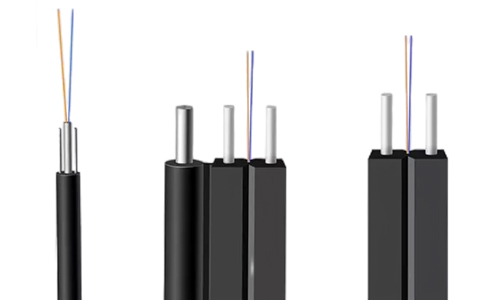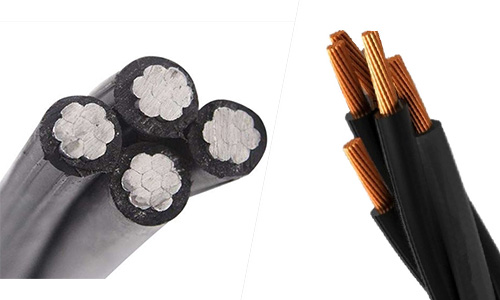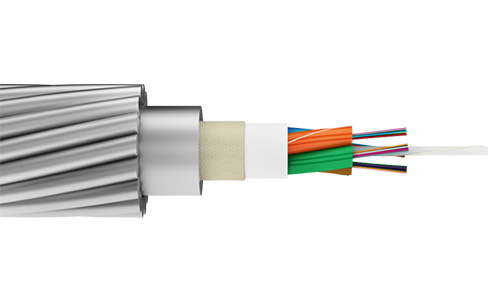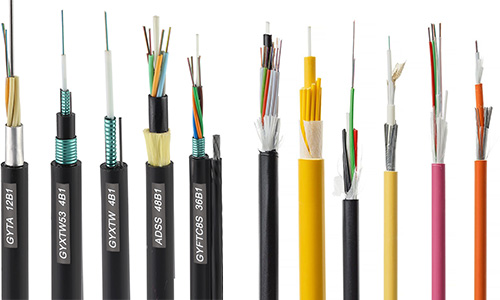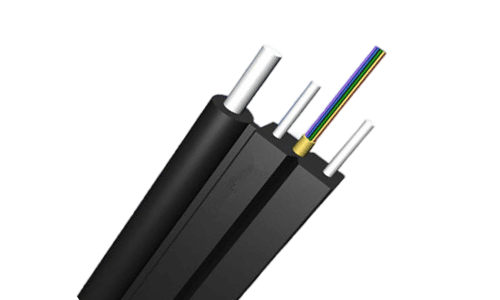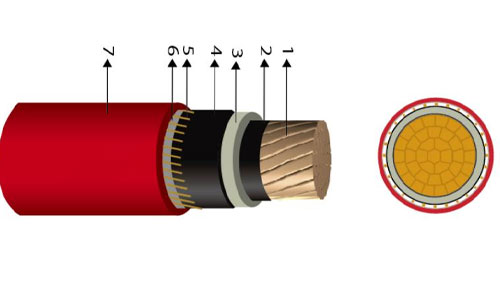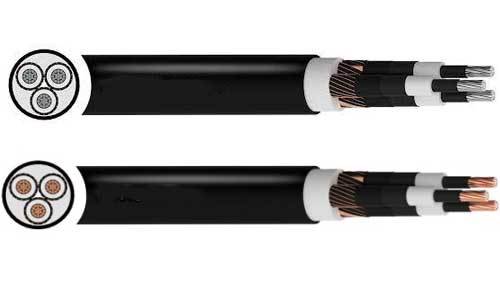FTTH (Fibre To The Home) refers to the access mode that connects the communication central office and the home only by optical fibre medium. The FTTH drop optical cable refers to the optical cable led from the optical cable distribution box to the in-house optical cable terminal facilities that is exclusively owned by a single household.
FTTH Bow-Type Optical Cable
The bow-type optical cable is mainly used for cabling and connecting the multimedia information box to corridor transition box, optical cable splice closure and telecommunication optical cable cross connecting cabinet.
The bow-type optical cable is divided into three types for indoor(GJXFH/GJXH), self-supporting aerial(GJYXFCH/GJYXCH) and underground duct burial(GJXFHA) deployment, the prices of the three products are quite different. At present, the price of buried type is about twice the price of indoor type. In general, only in some special application scenarios such as villas without pre-embedded pull boxes during the construction period, can we consider adopting the undergroundduct burial bow-type optical cable.
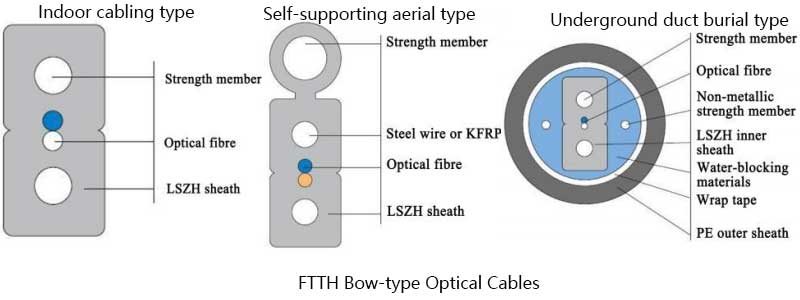
The FTTH bow-type optical cable has two forms of the non-metallic strength member and the metallic strength member.
①Indoor
Considering lightning protection and high voltage interference protection, the bow-type optical cable with the non-metallic strength member should be adopted for indoor use.
The non-metallic strength member is made of flat drop cable FRP (fibre glass) and KFRP (aramid fibre), which are mostly used for indoor cabling.
②Duct
The bow-type optical cable of the fibreglass has good rigidity and is suitable for in-conduit tubes, and the bow-type optical cable of the aramid fibre is suitable for the scenario where indoor open wires to be laid along right-angle turning positions such as wall corners.
③Outdoor
The metallic strength member is generally made of steel wire, and is mostly used for outdoor cabling.
The self-supporting bow-type optical cable with the metallic strength member is generally introduced from the outdoor optical cable distribution box to the indoor side. After it is introduced for indoor laying, the metal part of suspension wires shall be removed to prevent outdoor lightning from being led in.
At present, that indoor bow-type optical cable has types of 1-core, 2-core, 3-core, 4-core, etc. and the single-core cable should be selected for the residential users' access of the FTTH bow-type optical cable; the 2-core-4-core cables should be selected for the business users' access of the FTTH bow-type optical cable.
Round Drop Optical Cable
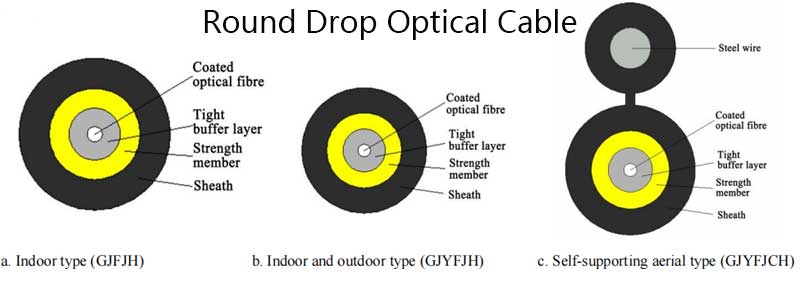
The circular drop optical cable is similar to the conventional single-core indoor tightly buffered optical cable in structure,
FTTH Bow-Type Optical Cable
The bow-type optical cable is mainly used for cabling and connecting the multimedia information box to corridor transition box, optical cable splice closure and telecommunication optical cable cross connecting cabinet.
The bow-type optical cable is divided into three types for indoor(GJXFH/GJXH), self-supporting aerial(GJYXFCH/GJYXCH) and underground duct burial(GJXFHA) deployment, the prices of the three products are quite different. At present, the price of buried type is about twice the price of indoor type. In general, only in some special application scenarios such as villas without pre-embedded pull boxes during the construction period, can we consider adopting the undergroundduct burial bow-type optical cable.

The FTTH bow-type optical cable has two forms of the non-metallic strength member and the metallic strength member.
①Indoor
Considering lightning protection and high voltage interference protection, the bow-type optical cable with the non-metallic strength member should be adopted for indoor use.
The non-metallic strength member is made of flat drop cable FRP (fibre glass) and KFRP (aramid fibre), which are mostly used for indoor cabling.
②Duct
The bow-type optical cable of the fibreglass has good rigidity and is suitable for in-conduit tubes, and the bow-type optical cable of the aramid fibre is suitable for the scenario where indoor open wires to be laid along right-angle turning positions such as wall corners.
③Outdoor
The metallic strength member is generally made of steel wire, and is mostly used for outdoor cabling.
The self-supporting bow-type optical cable with the metallic strength member is generally introduced from the outdoor optical cable distribution box to the indoor side. After it is introduced for indoor laying, the metal part of suspension wires shall be removed to prevent outdoor lightning from being led in.
At present, that indoor bow-type optical cable has types of 1-core, 2-core, 3-core, 4-core, etc. and the single-core cable should be selected for the residential users' access of the FTTH bow-type optical cable; the 2-core-4-core cables should be selected for the business users' access of the FTTH bow-type optical cable.
Round Drop Optical Cable

| Model and specification |
Outer diameter (mm) |
Short-term tensile resistance (N) |
Optical cable weight (kg/km) |
Environmental resistance(℃) |
| GJFJH-1B6a2 | 2.5 | 150 | 6.5 | -40~+60 |
| GJYFJH-1B6a2 | 3.0 | 500 | 9.5 | -40~+60 |
| GJYFJCH-1B6a2 | 5.0*3.0 | 600 | 20 | -40~+60 |
- 1.which has the advantages of torsion resistance,
- 2.bending insensitive performance,
- 3.good tensile performance,
- 4.good environmental protection and flame retardance effect,
- 5.wide applicable temperature range,
- 6.it is structured without groove to reduce optical fibre attenuation increasing probability;
- 7.with all-dielectric structure,
- 8.good lightning protection,
- 9.high voltage invasion protection,
- 10.anti-rust characteristics.

